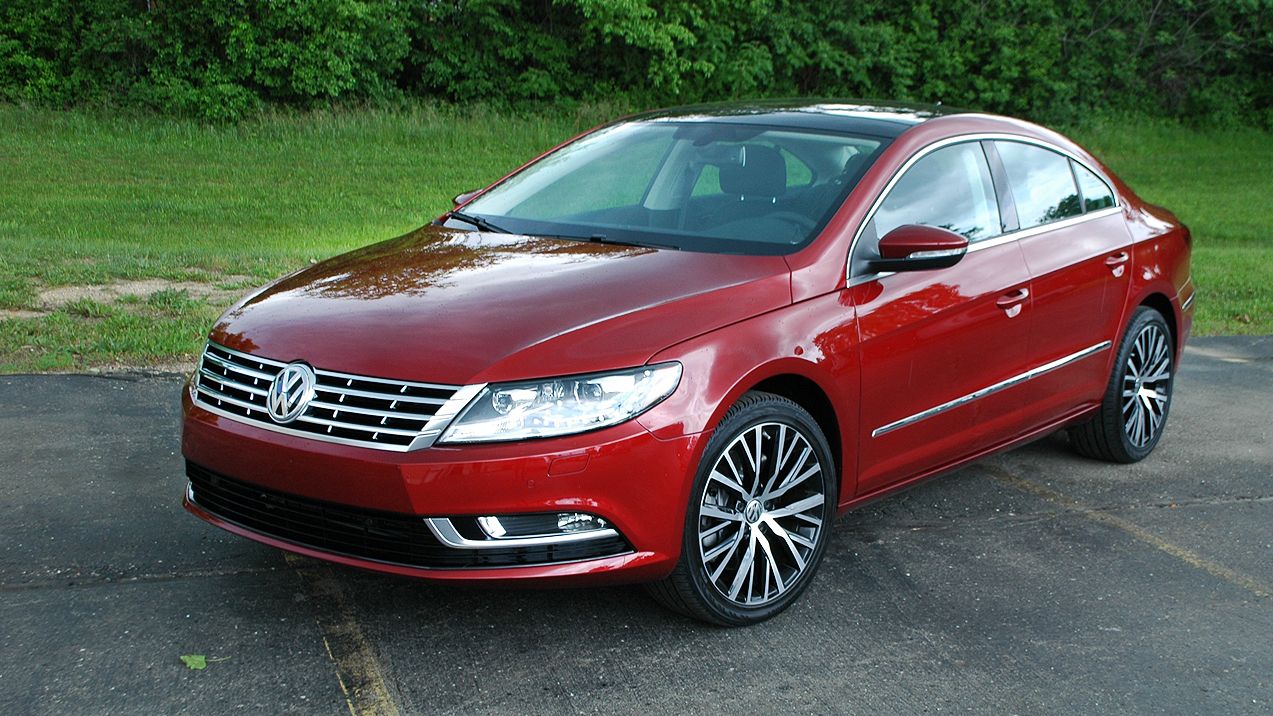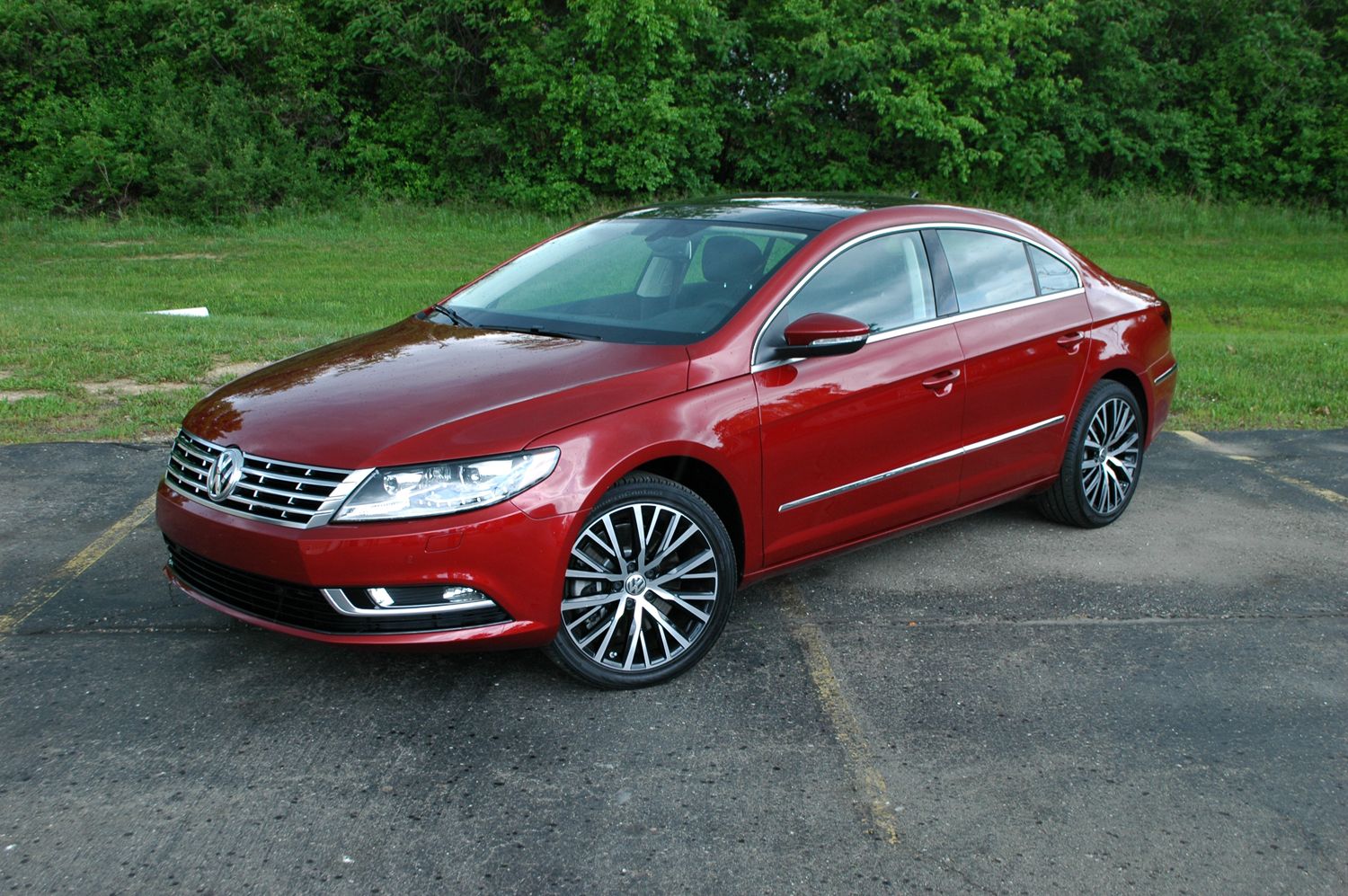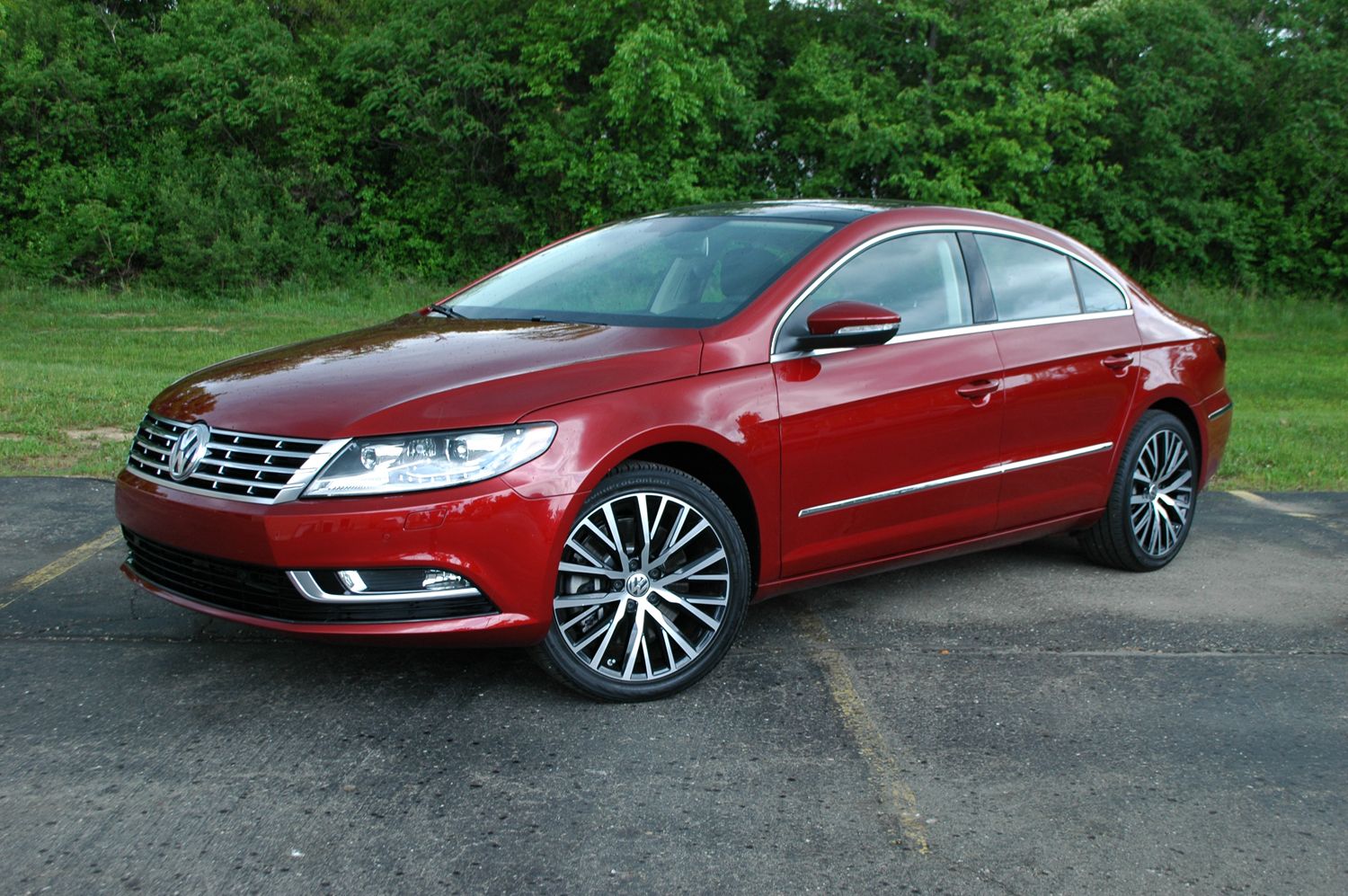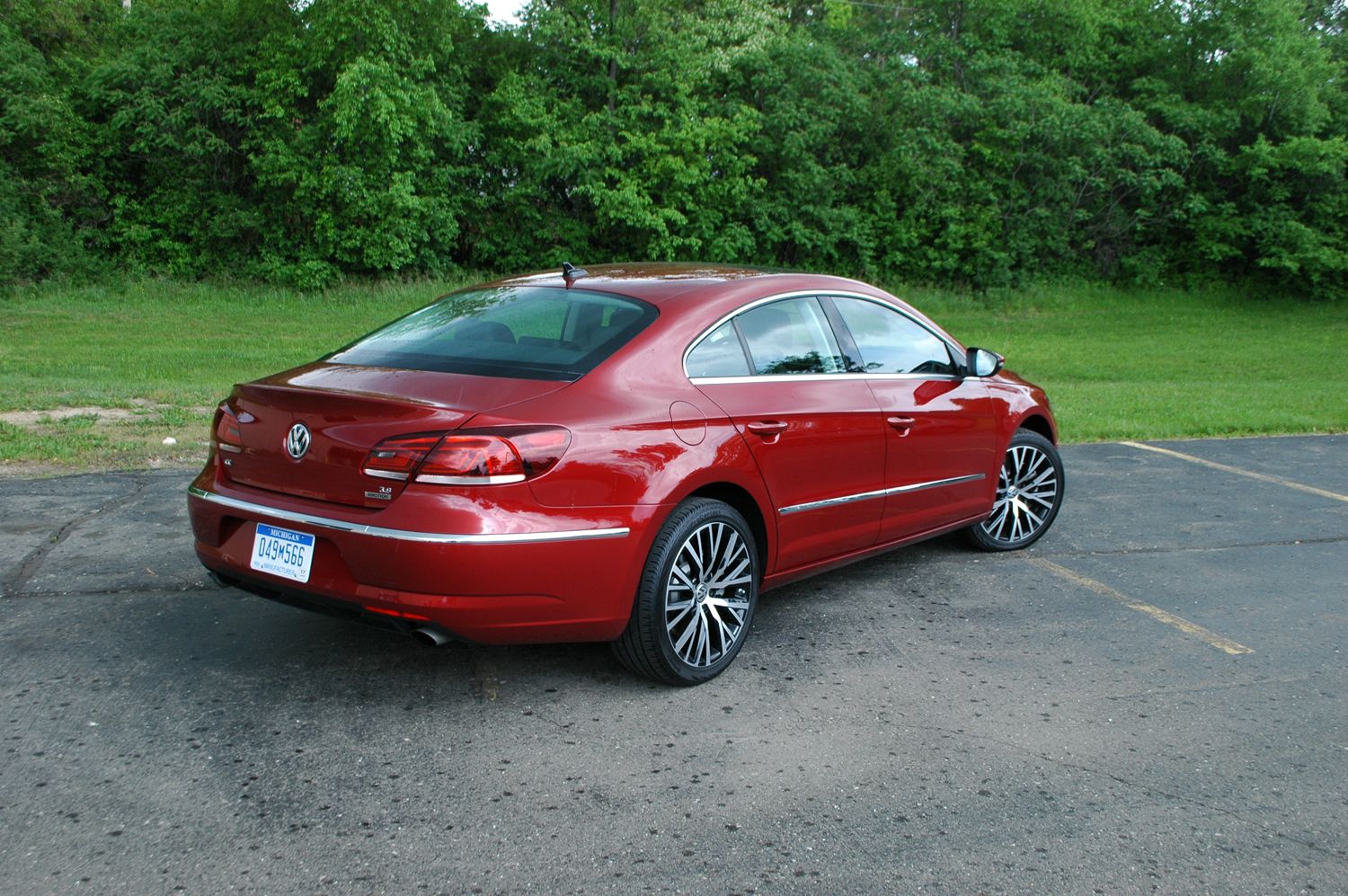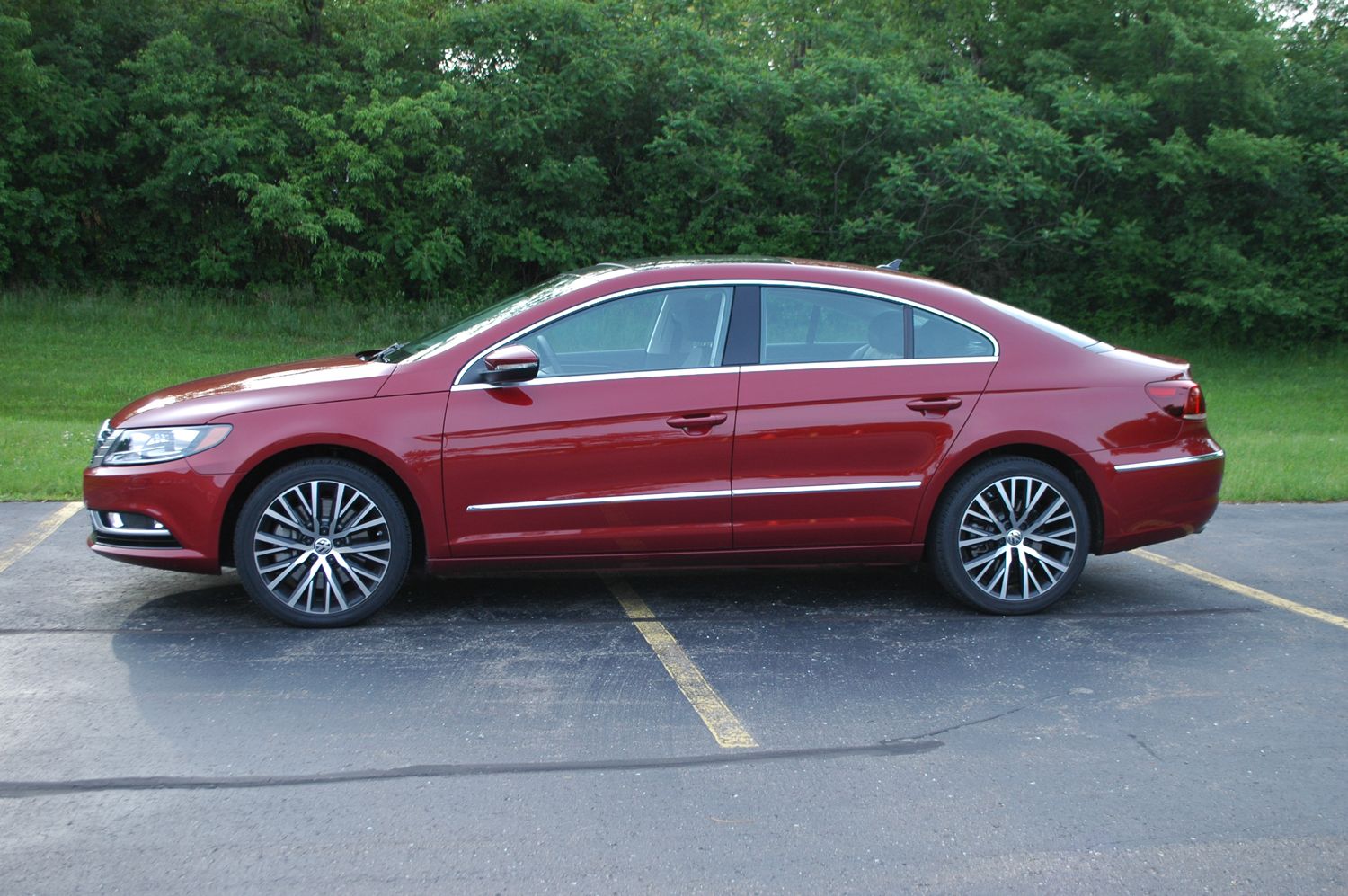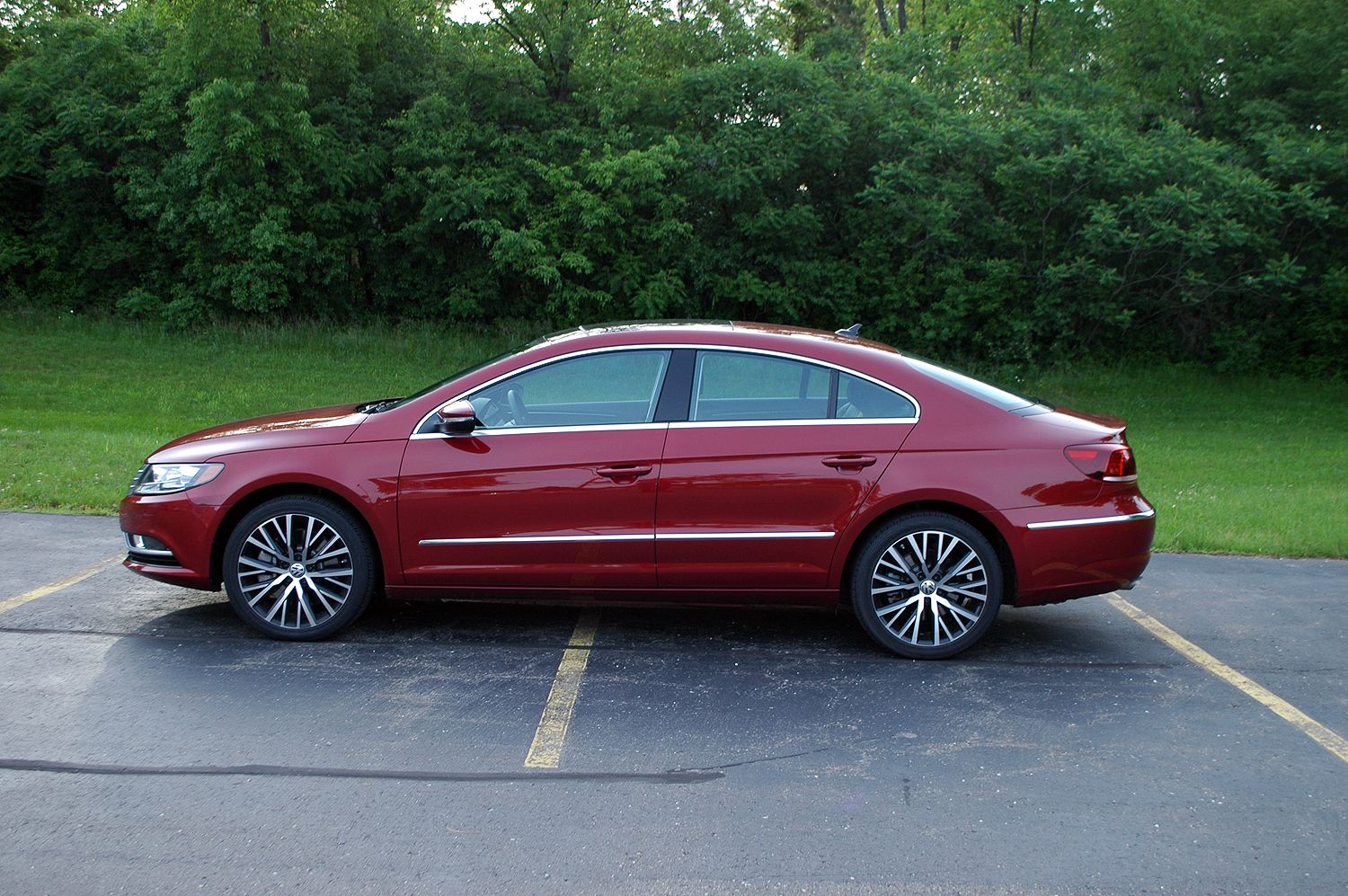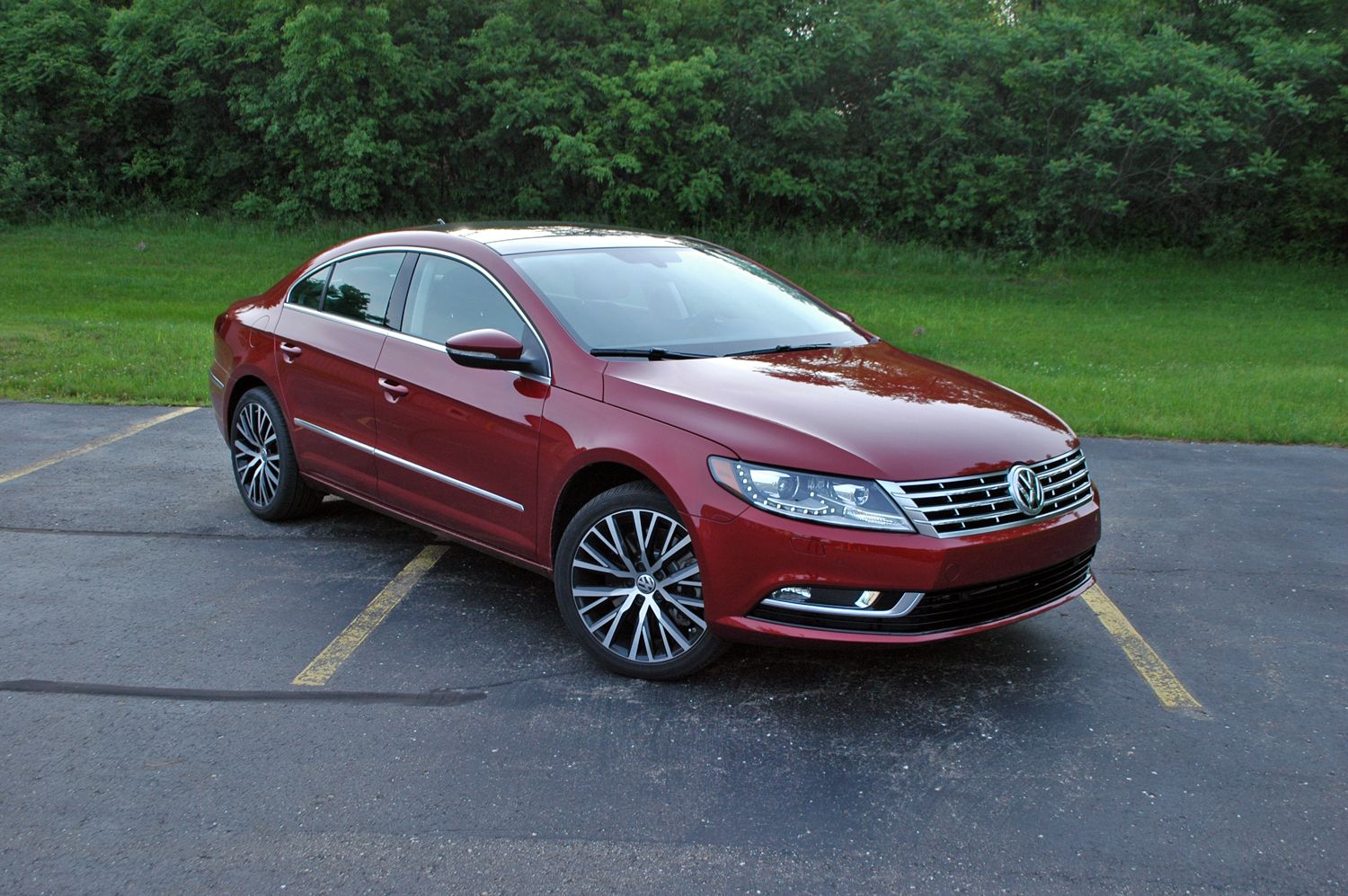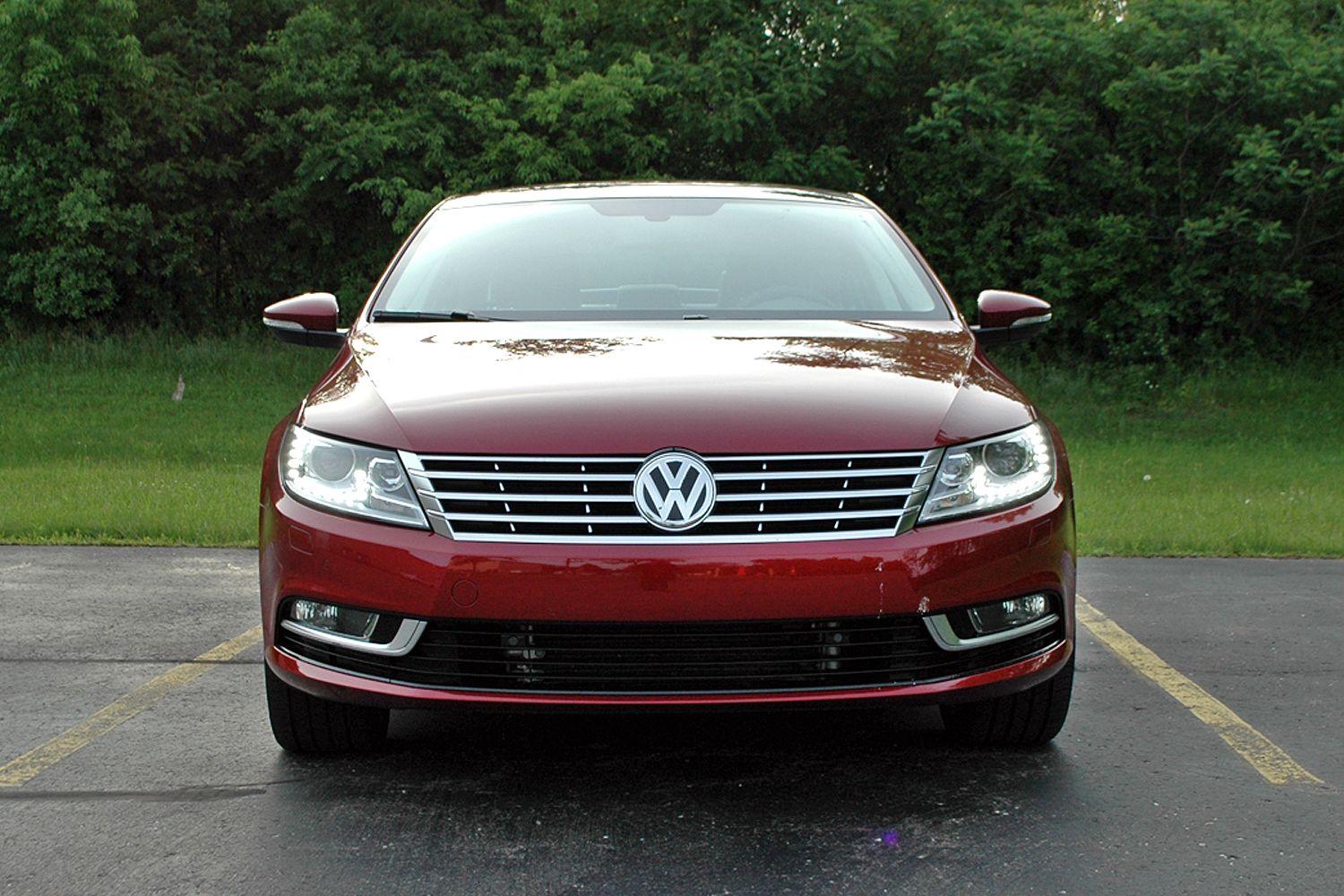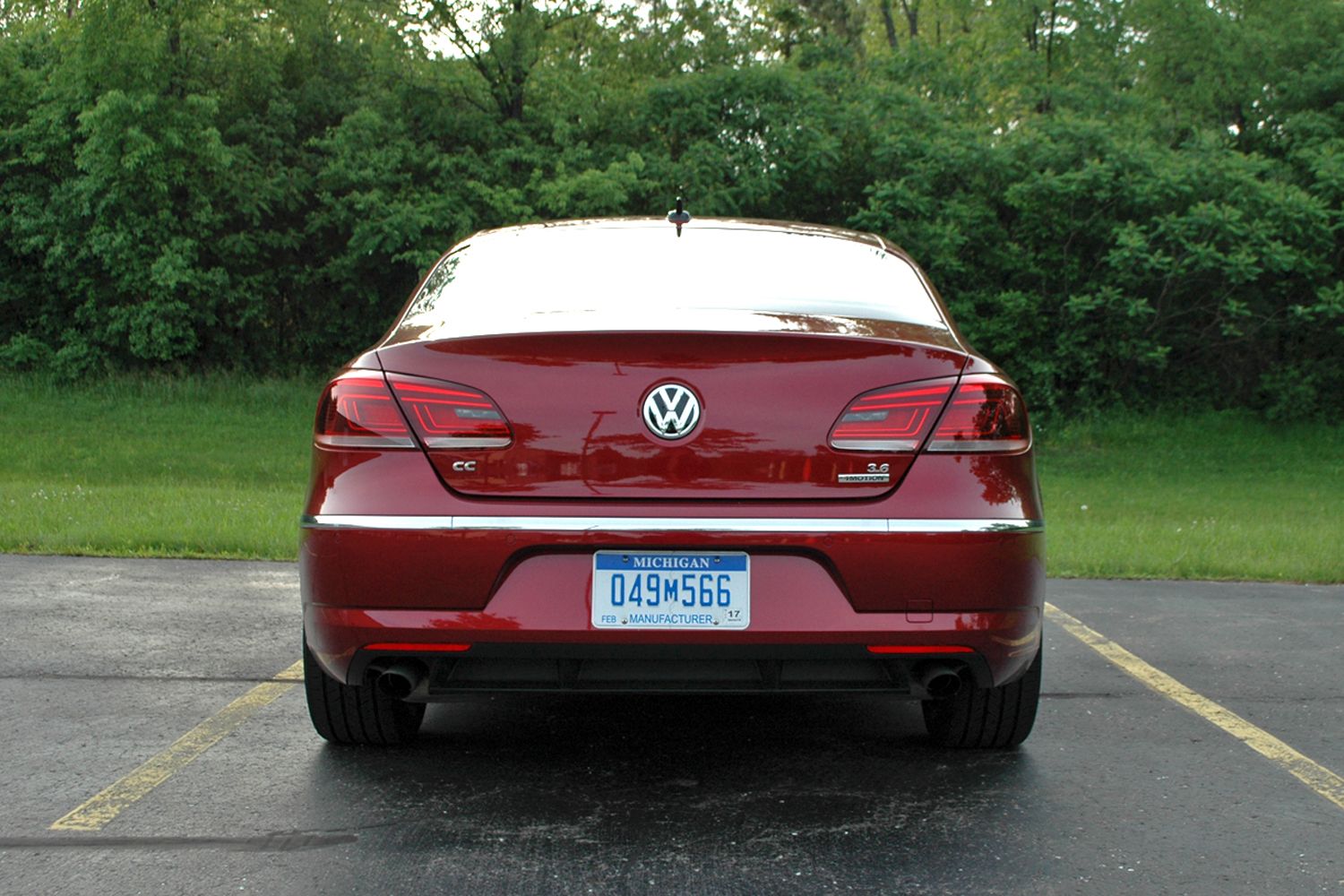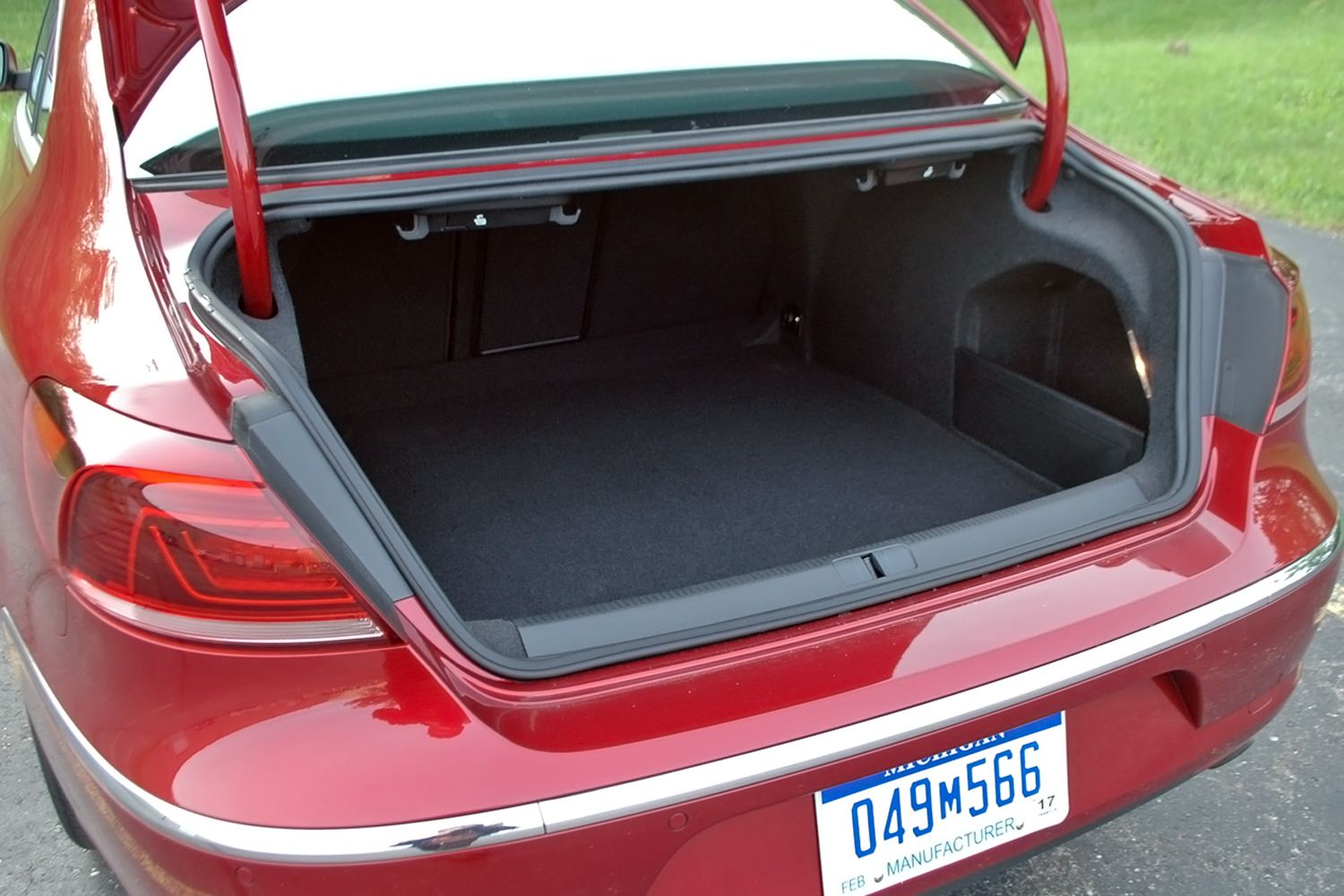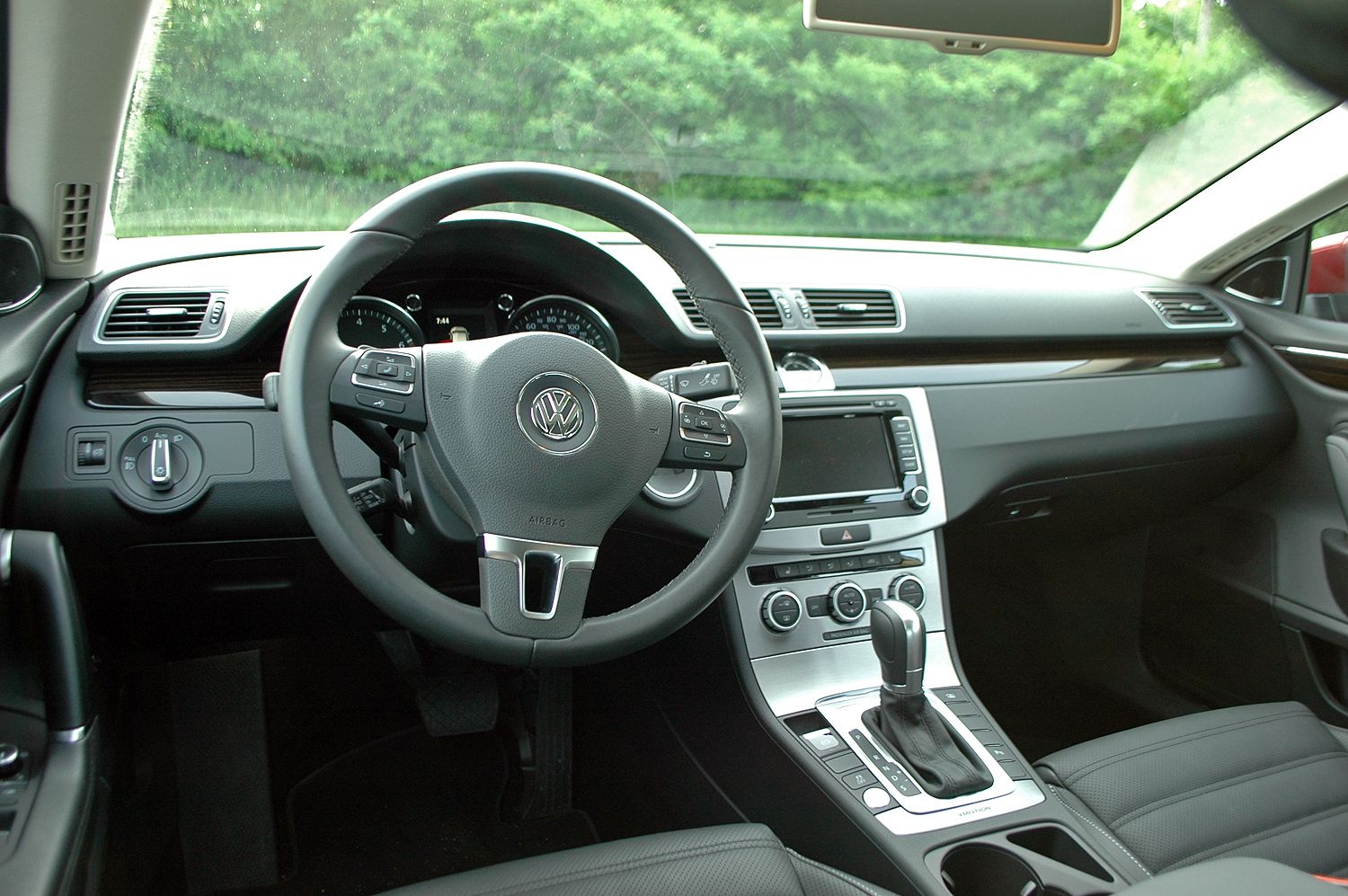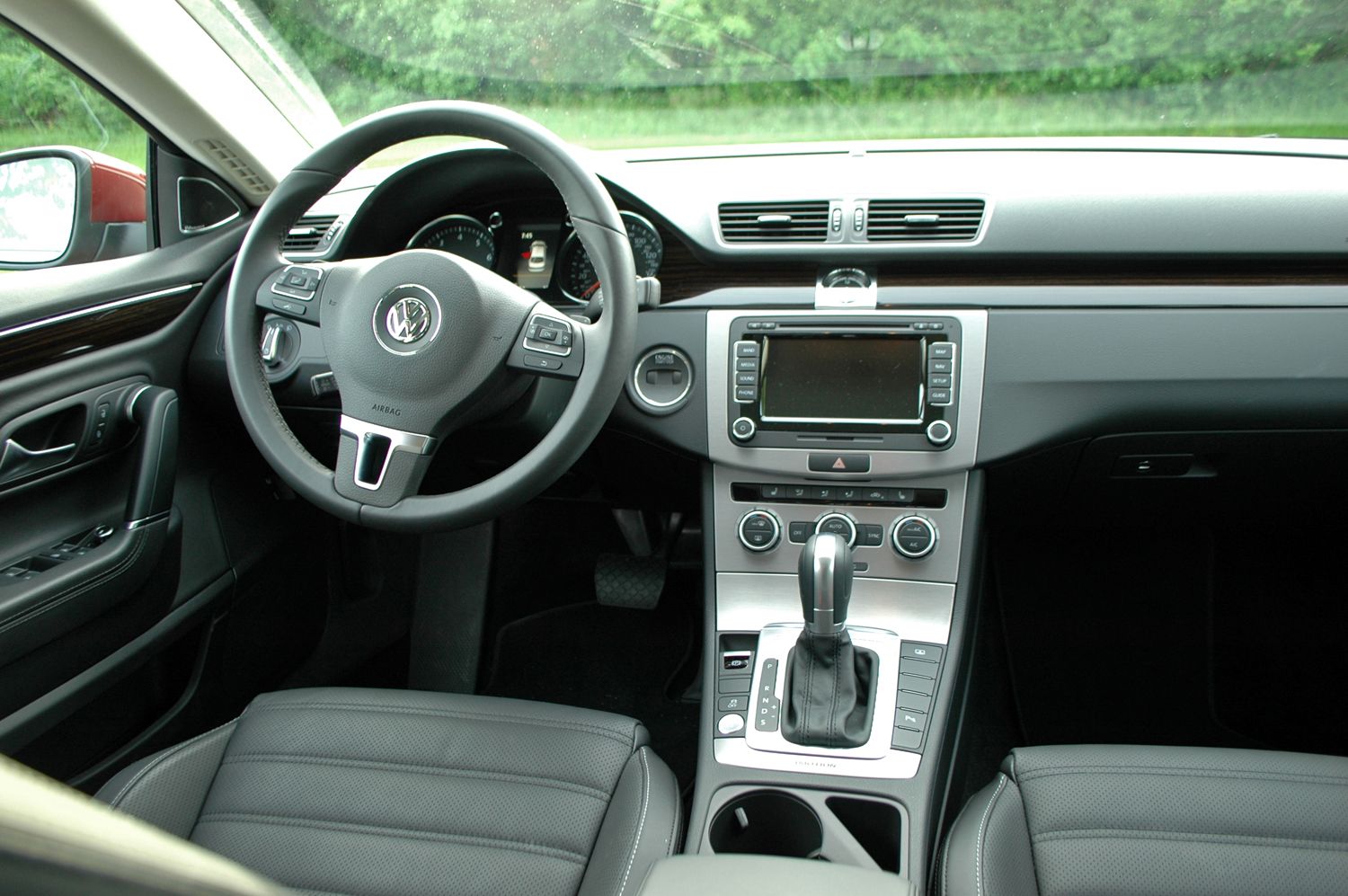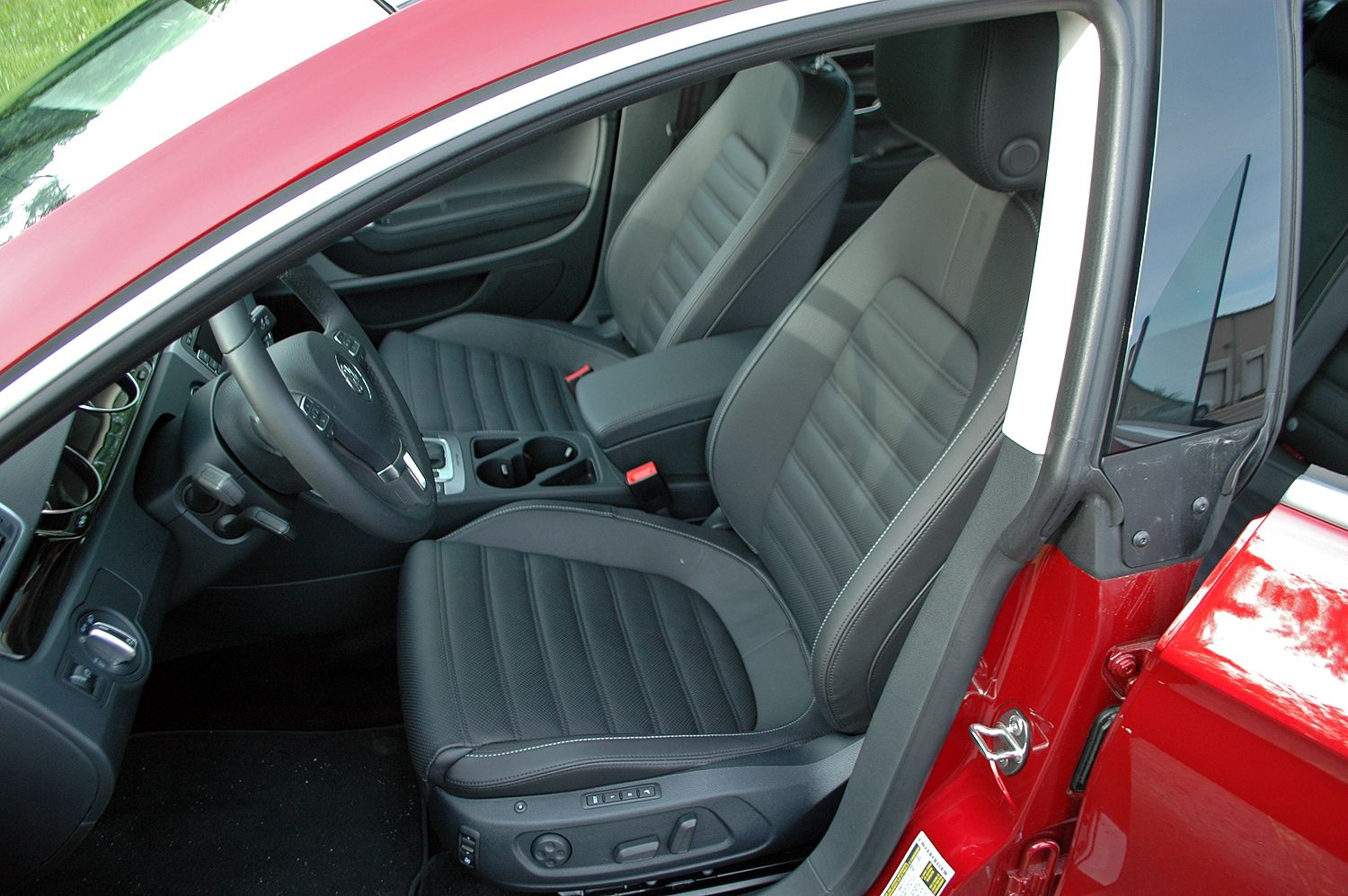The CC has always been something different for Volkswagen.->ke94 When it debuted in 2008, this curvy luxury->ke505 sedan->ke142 was VW's second attempt at a surprisingly upscale product (the first was the Phaeton,->ke287 which was a bit too upscale for the VW badge). Modern Volkswagens have evolved into well-built, fun-to-drive yet stylistically conservative vehicles. Even the sporty GTI->ke223 shares an upright body and sensible hatchback with the subcompact Golf.->ke164
The CC, however, is a curvy, graceful four-door that competes with Acura,->ke10 Infiniti->ke36 and Lincoln,->ke48 and even knocks at the door of its Audi->ke14 cousins in some ways. The notion of a $40,000 Volkswagen sedan might seem strange at first, but don't forget that Ford->ke31 and Hyundai->ke201 are also fielding premium cars at a similar price point. I spent a week with the 2015 Volkswagen CC, to see if Volkswagen's quality and driving dynamics are good enough to compete with the offerings of the "real" premium brands.
Continue reading for the full review,
2015 Volkswagen CC - Driven
- Make: Array
- Model: 2015 Volkswagen CC - Driven
- Engine/Motor: V6
- Horsepower: 280
- Transmission: six-speed automatic
- [do not use] Vehicle Model: Array
Exterior
I wasn't exaggerating about the CC standing out from the rest of the Volkswagen family. This curvy sedan's clearly got plenty of VW styling DNA, thanks to a narrow, full-width grille, distinctive curved LED accents under the rounded headlamps, and strong horizontal character lines on the flanks, but it's applied to a sleek silhouette inspired by the "coupe-sedan" trend that came out of Europe in the early oughts.
Longer and lower than the Passat with which it shares a platform, the CC has a “dry clean only” look to it; this is the sort of car that looks at home in valet parking.
Though curvy, the style suggests luxury more than sport. Even the R-line, which adds a deeper airdam, projector foglamps, and side skirts, is a low-key design.
In 40 years, the CC will be used as an example of styling trends that were popular in this era, but without being remembered as the one that took them too far.
Interior
The interior environment backs up the initial impression, showing off a familiar steering wheel and center stack, but dressing things up with contoured leather on V-Tex seats and a choice of brushed aluminum or “engineered ebony” wood trim. I’m still not sure if “engineered ebony” means it’s faux wood or heavily-processed real timber.
Rear seat room is slightly tighter than average for a car of this size, and the CC is best used as a four-seater as fashion edges out function slightly in this arena. VW offers several interior environments in the CC, including handsome two-tones.
A navigation system, automatic climate control, and a backup camera are standard across the board. A much-welcome feature for humid-but-cool Michigan summers is the climate control’s ability to run the air conditioning compressor based on a humidity sensor, regardless of temperature setting. That’s the sort of subtle change that makes the cabin a comfortable place to be.
Heated and cooled seats, rear sunshades, a sunroof, VW’s Car-Net infotainment system, and a 600-watt Dynaudio sound system are available. Other coupe-sedans offer cavernous hatchbacks behind the rear seats, but the CC has a modest trunk with enough space for a week’s worth of luggage.
Powertrain
So, it’s an upper-class car with a middle-class badge, or at least that’s the intent. It’s almost always the drive that determines the line between success and failure though. The seat of my pants says that the Volkswagen CC succeeds. The standard engine is a 2.0-liter turbocharged four-cylinder with 200 horsepower. Don’t be fooled by the four-plug engine though, VW’s four is sewing-machine smooth thanks to direct fuel injection, and there’s enough power to keep things respectable. The four-cylinder CC can be had with a six-speed manual transmission, as well.
The uplevel engine is the fantastic 3.6-liter VR6 narrow-angle V-6, which ups the horsepower ante to 280 and allows the CC to step away from traffic lights with confidence. A six-speed automatic Tiptronic gearbox is standard with the VR6 engine. Volkswagen’s 4MOTION all-wheel drive is also available with the VR6. Long stretches of freeway are where this car’s at its best, and the VR6 engine is relaxed even at higher speeds. The CC isn’t designed to blur your vision or make you swoon with power, and it doesn’t try to do that.
The suspension is similarly understated yet capable. If there’s one thing VW does well, it’s driving dynamics, and the CC’s four-wheel independent suspension is a great example of this. Lightweight aluminum control arms improve handling response, and the rear suspension is on a noise-reducing subframe to keep the interior quiet. On metro Detroit’s notoriously third-world road surfaces, the CC strikes a perfect balance of responsiveness and compliance, maintaining a good grip on bumpy roads without being too stiff. A lot of sport-luxury cars tend to get this wrong in Detroit (looking at you, Mercedes->ke187 C400 and Audi A6).->ke934
Electromechanical power steering is standard. I don’t want to say the drive is sterile, as it’s more engaging than, say, the Hyundai Azera, but the CC does tend to go about its business in a relatively emotionless manner. Everyday driving tasks are dispatched with a hint of the casual amusement that’s often found in Acura->ke10 and Infiniti->ke36 products—but only a hint. The CC is an enjoyable driver without being a specifically sporty one.
The CC is also Volkswagen’s techno sedan. Adaptive headlights are standard, as well as stability and traction control.
Pricing
The CC is priced right in the heart of the “near-luxury” market. There are four trim levels. The CC 2.0T Sport comes in at $32,685 with the four-cylinder engine, six-speed manual transmission, navigation, and LED exterior lighting. The sport-look R-Line 2.0T starts at $33,785, and the 2.0T Executive adds a standard six-speed Tiptronic transmission, an upgraded navigation system with a larger touchscreen, and more power amenities.
The flagship of the line is the VR6 4MOTION Executive, which offers the VR6 engine and all-wheel drive as well as unique wheels, heated and cooled seats (and a driver’s massage seat), parking sensors, a rear sunshade, and the Dynaudio sound system. It’ll set you back $43,140.
Competition
2015 Acura TLX
Acura’s->ke10 TLX->ke4779 is a technobarge for the budget (and sport) minded, with near-luxury pricing ranging from $32,000 to $44,000 and a choice of eight- or nine-speed automatic transmissions, fancy jeweled LED headlamps, a high level of smartphone interfacing, and a driving mood that’s so poised it’s almost digital.
You can check our driven review here.
2016 Nissan Maxima
The Nissan Maxima->ke540 takes a big jump in visibility for 2016, with a 300-horsepower V-6, standard navigation, driving mode selection system and some extremely eye-catching new sheet metal. A cockpit-style interior and dual sunroofs make it a tempting alternative even to some Infinitis.
Read our full review here.
2015 Hyundai Azera
Offering a 293-horsepower V-6, standard blind spot detection, and an available lane-departure warning system, the Azera’s->ke1036 got a bundle of features normally found in more expensive cars at a mid-luxury price.
Read our full review here.
Conclusion
The difficult question is the same one that the 2014-2016 Hyundai Equus and 2014-2016 Ford Taurus SHO are trying to answer for their respective brands: what does a $45,000 Volkswagen offer that makes up for the lack of a "premium" nameplate? If the CC was an Audi, nobody would bat an eyelash. Sitting on the floor of a Volkswagen showroom, the CC is a handsome halo vehicle that seems to be parked in a place where nobody is apt to be looking for it. More buyers have found it than were drawn by the Phaeton during its three years in the U.S. market, and the CC is a much better prospect at half the price.
Marketing issues aside, the CC is a pleasing and rewarding near-luxury sedan with high-class looks. It’s a natural step up from sporty family sedans like the Mazda6->ke346 and VW’s own Passat,->ke224 and one that doesn’t quite command BMW or Audi money. It leans a bit more conservative than some of the competition, in spite of the eye catching design however, and more personable cars like the 2015 Volvo S60 and 2014 Infiniti Q50 are more likely to grab buyers wanting an emotional connection to their curvy sedans.

